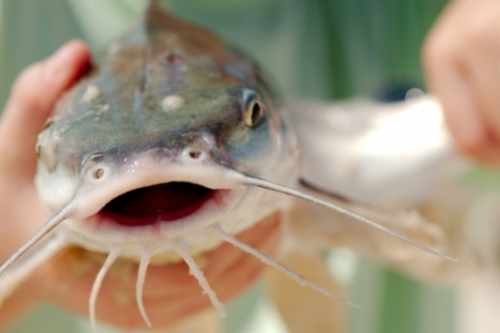There are a lot of misconceptions concerning this subject. While many individuals believe that catfish sting, many others disagree. Catfish, however, don’t have a real stinger, but their pectoral and dorsal spines may undoubtedly hurt you.
Many catfish species do, in fact, have venom glands at the base of their spines. The “stings” of most freshwater catfish, however, are unpleasant but not painful. When dealing with young catfish, a possible catfish sting is always a concern.
Young catfish under 3 pounds have sharp “stingers” that turn into fearsome weapons when they move incessantly. When dealing with larger catfish, these spines will soften with time, so they aren’t as much of a problem.
Although these stings are usually harmless, they can cause serious tissue necrosis. Catfish stings are most commonly found on the hand since anglers usually hold them after catching them. The hemolytic, dermonecrotic, vasospastic, and fatal components of the venom and skin toxins generate symptoms (severe pain and inflammation at the sting site).
Table of Contents
How to Properly Hold a Catfish to Prevent a Sting?
It is essential that all catfish anglers know the correct way to hold such a fish not only to prevent them from falling but also to prevent a sting that could cause problems for them.
You have to hold them from the top and behind the head, as well as the pectoral fins. Ensure the dorsal spine does not penetrate your palm when griping them in this manner.
You may also hold them in this position, but with your hand beneath the fish. In either case, you must exercise caution since you never know when they will decide to flip around. The secret to avoiding the spines is to maintain a firm grip.
If a catfish is too big to grasp in one hand, the spines are generally dull enough that they aren’t a problem. It is suggested to control a catfish with a lip clamp until you are more comfortable with it. This is especially important for inexperienced anglers to further reduce the risk. Individuals could even use a fish grip until they gain confidence.
As we have said, the big catfish will not catch you with their spines. However, you have to keep in mind that there are too big catfish that could be difficult to hold if you are inexperienced.
For example, a blue catfish could weigh 45 kg. Although it is easy to avoid being stung by fish of this size, it is true that you will need extra support in these cases. Larger catfish will almost certainly require two hands to hold. To avoid those pectoral fins, be careful where you rest your hands.
The most significant threat posed by giant catfish is their mouths. Because of their size, you run the danger of getting bitten if you put your hand in their mouth to extract the hook. Catfish teeth aren’t technically hazardous, although they are abrasive.
It may scrape your skin if it still has energy and bites you. It’s not going to be the most terrible event of your life, but it’s also not going to be the most enjoyable.
How Should I Release a Catfish to Avoid a Sting?
It’s better to just drop a little catfish out of your palm and into the water when releasing it securely. When dealing with a small catfish, though, you risk having your fingers cut by their fins. Avoid a painful cut by dropping the fish quickly by opening your palm and pulling it away from you.
Treatment for a Catfish Sting
Deep punctures may require medical treatment, although little stings or pricks may typically be handled relatively well with adequate washing and pain medication.
The initial step is to submerge the afflicted region in hot water as long as it is acceptable. A sting is generally relieved by doing so. Spines might be buried in the affected region. In that situation, tweezers should be used to remove them.
It’s critical to remember that the wound has to be cleaned with fresh water. It shouldn’t be taped or sewed together either.
If your wound has been infected by a catfish sting, it is best to use oral antibiotics. If an infection develops, antibiotics should be given for at least 5 days after all indications of illness have disappeared.
Before starting any antibiotic, make sure you don’t have any medication allergies. If your case worsens, the best thing you can do is go to a doctor so that you are treated appropriately according to your particular situation.
Some doctors recommend 1 to 2 acetaminophen every 4 hours or 1 to 2 ibuprofen every 6 to 8 hours.
Conclusion
It’s important to remember that the spines of small fish are sharper. They can be as sharp as a needle and might cause more discomfort. There are fewer secure places on a small catfish’s body to hold it safely.
In case you are stung by a catfish, you must take the necessary measures to prevent the problem from worsening. If the situation does not look good and your wound becomes infected, do not hesitate to go to the doctor.

